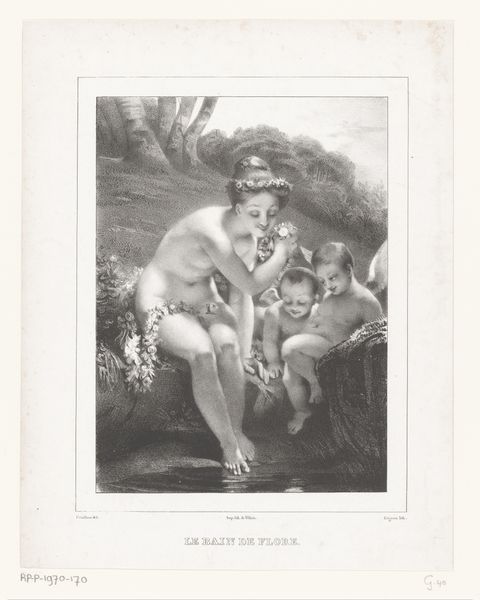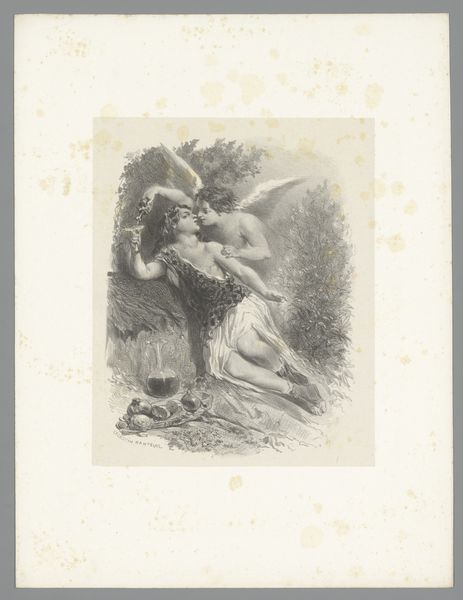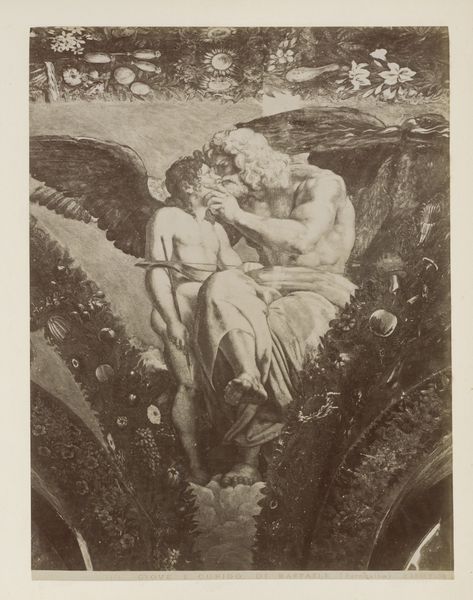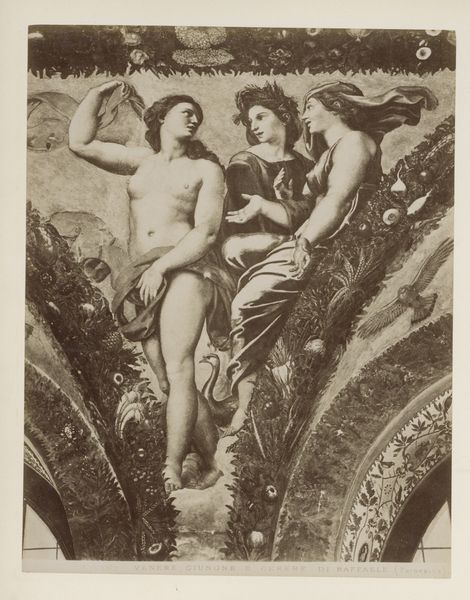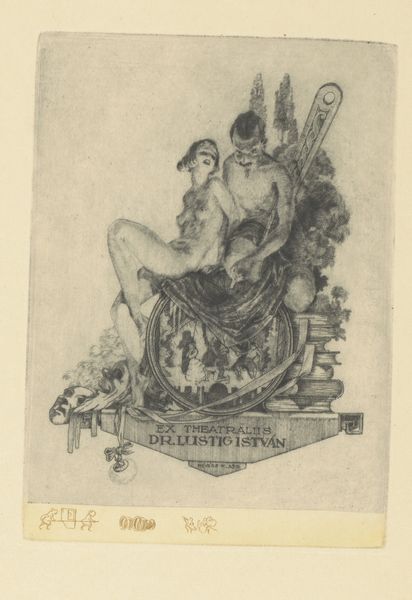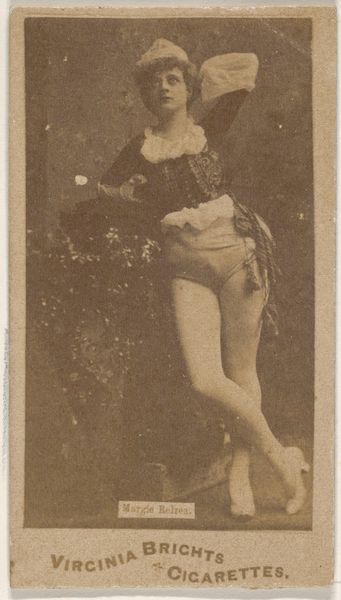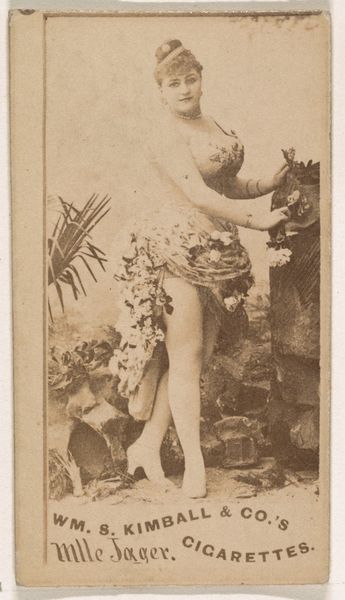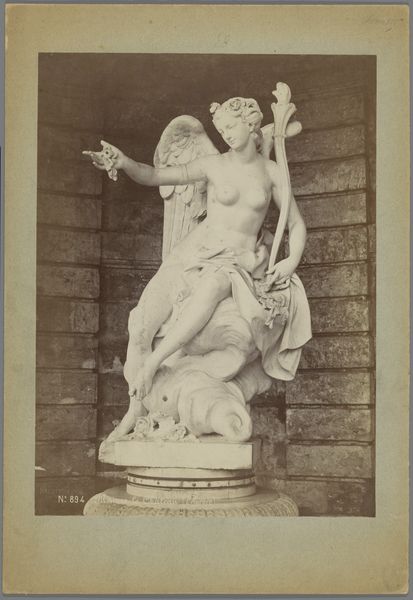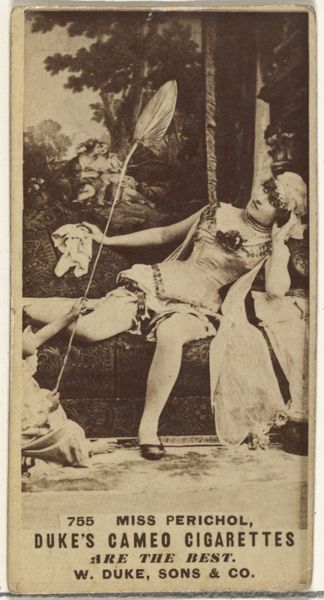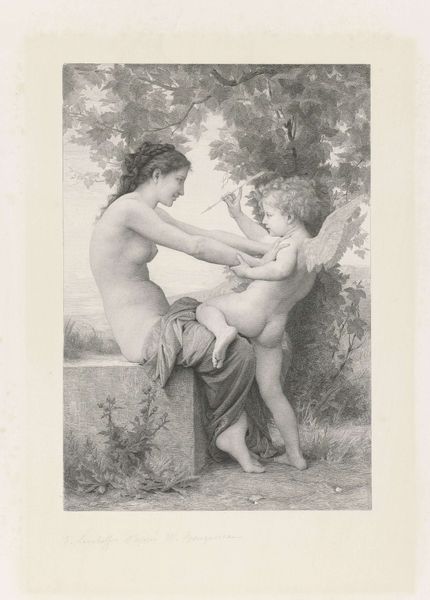
Fotoreproductie van fresco Venus en Psyche door Rafaël in het Farnesina te Rome c. 1870 - 1890
0:00
0:00
print, fresco, photography
#
portrait
#
allegory
# print
#
greek-and-roman-art
#
fresco
#
photography
#
history-painting
#
nude
Dimensions: height 260 mm, width 200 mm
Copyright: Rijks Museum: Open Domain
Curator: What we have here is a photographic reproduction made by Domenico Anderson, dating roughly from 1870 to 1890. It is based on Raphael’s fresco "Venus and Psyche" located in the Farnesina in Rome. Editor: The monochrome palette certainly draws the eye to the interplay of light and shadow, enhancing the contours of the figures. The composition itself is very classical in its arrangement. Curator: Indeed. Anderson’s choice of photography transforms the original fresco. It moves it from the realm of elite, site-specific artwork into a mass-produced image. What was once fixed, painted labor, is now mediated through reproducible technology. This changes its accessibility and cultural value considerably. Editor: Yet, even in reproduction, Raphael’s command of form persists. Notice how the curve of Venus’s arm mirrors Psyche's posture, creating a unified flow through the composition. The floral garland both frames and enhances the narrative's allegorical elements. Curator: Absolutely, and we should not overlook how the very act of photographic reproduction can obscure the tactile quality of the fresco, further divorcing us from its initial context and production process. The image then enters a new circuit of valuation. Editor: A compelling point about valuation. Looking at the arrangement, I see that Raphael’s deployment of diagonal lines creates an immediate dynamism that counteracts the more static elements of the setting. It charges the allegorical subject with implied movement and liveliness. Curator: I'm drawn to the economic implications: the burgeoning tourism in the 19th century demanding such reproductions. Anderson fulfills that need, contributing to a growing image economy—transforming art into commodities. Editor: Well, I have to say, analyzing this photograph alongside your perspective has given me a fresh appreciation for its aesthetic qualities beyond just what the picture shows! Curator: And, thinking about its circulation underscores how the very meaning of 'art' is constantly re-negotiated through materials, production and context.
Comments
No comments
Be the first to comment and join the conversation on the ultimate creative platform.


